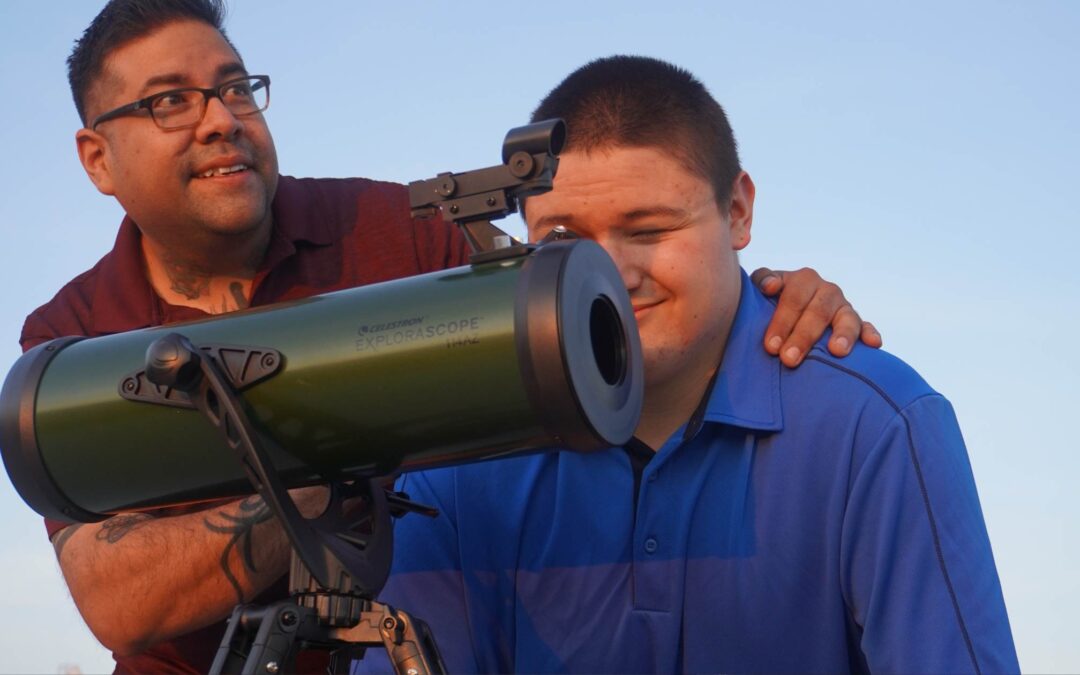Science Lesson
Introduction to Magnetism
All objects are made up of tiny particles called atoms. Atoms are composed of several different particles, including tiny negatively charged electrons that rotate around the atom nucleus.
The electrons in the atoms of magnetic objects are all, or nearly all, spinning in the same direction around the nucleus. This is what causes an object to be magnetic, or, attracted to magnets.
In each magnetic object there are many different groups of atoms, each forming its own mini-magnet, but these groups are in opposing directions to each other. In a magnet, these groups of atoms are aligned so that the mini-magnets are all pointing in the same direction. The term for this is polarity. This alignment of the groups of atoms is what makes an object a magnet.
What kind of material sticks to magnets? Ferromagnetic objects, containing iron, cobalt, or nickel (transition metals), do. For younger children, consider going on a ‘magnet hunt’. Give them a magnet (a horseshoe or bar magnet will work well, if you have one), and have them try to ‘capture’ other objects, using the magnet. For example, they might experiment on paper clips, coins, an eraser, nails, aluminum foil, a plastic pen, and a pencil. It is important to understand that not all metal is magnetic (the foil, for example), and some objects are only partially made with magnetic materials.
All magnets have both a north and south pole due to the alignment of their groups of atoms. Opposite poles attract one another, same poles repel one another.
This means that if the north pole of a magnet faces the south pole of another magnet, they stick together, or attract. However, if you hold the north pole of a magnet to the north pole of another magnet, they push away from, or repel, each other.
You can demonstrate this with a magnet science project. No matter how hard you try to force two same poles together, they will push away. However, if you flip one of the magnets around so that opposite poles now face each other, the two magnets will attract each other and come right together.
The north pole of a magnet points approximately toward the geographical North Pole of Earth, to a location called the Magnetic North Pole situated in Northern Canada. The exact location is gradually shifting as the Earth’s magnetic field shifts. The Magnetic North Pole works as a south pole because it attracts the north pole of magnets.
You may want to explain to you children that magnetic compasses use magnetized needles. The first compasses were lodestones – magnetite stone that has polarity. The Chinese were apparently the first group of people to use lodestone as compasses; they began to make them around 1000 AD. The earliest compasses were merely a lodestone placed in a dish of water, so that the north pole of the lodestone could swivel to point North. By 1500, magnetic compasses were widely used by Europeans as well, making the navigation required for Columbus and Magellan’s famous voyages possible.
Magnetic Fields
A magnetic field is the space around an electrical current or magnet in which the magnetic force (cause of the attraction) is felt. Many scientists have theorized that the Earth’s magnetic field is produced by electric currents caused by molten iron at the core of the Earth.
You can make a picture of a magnetic field, using a piece of paper, a magnet, and iron filings. Place the magnet directly underneath the sheet of paper, and then carefully sprinkle the iron filings over the top of the paper. The iron filings will shift into the pattern of the magnet’s magnetic field. If you have more than one shape of magnet (horseshoe, bar, ring, cylindrical, or disc), you might want to try the experiment again with a different shape, to observe how the magnetic fields differ for each magnet. You can also place two magnets close to each other and observe how multiple magnets affect the field.
If you intend to do this experiment again, we suggest that you place the iron filings in a plastic sheet protector and seal the edges with tape. This is an effective means of keeping the iron filing from scattering. Iron filings are tiny bits of metal and have sharp edges, so care must be exercised to avoid getting loose filings in your eyes.
Types of Magnets
There are three main types of magnets: temporary, permanent, and electromagnets.
Temporary. Some iron and iron alloys can be easily magnetized by even a weak magnetic field. However, when the magnetic field is removed, the object gradually loses its magnetism.
Permanent. Examples are alnico (Aluminum Nickel Cobalt alloy) and ferrites (ceramic-like material that is made from a mix of iron oxides with nickel, strontium, or cobalt). Once they are magnetized, these objects do not easily lose their magnetism.
Electromagnets. These are used when a very strong magnet is necessary. Electromagnets are made by placing a metal core inside a coil of wire that is carrying an electrical current. The electricity going through the wire produces a magnetic field. While the electric current is flowing, the core acts as a strong magnet. Computers, TVs, and electric motors use electromagnets.
The common types of material that permanent magnets are made with are ceramic, alnico, and neodymium. Ceramic magnets are strong, and work well for most experiments. Alnico magnets are even stronger and work very well for science experiments, although they are more expensive than ceramic magnets. Neodymium magnets are so strong that one a half-inch in diameter can lift several pounds of ferromagnetic objects. They are the most expensive of these three magnet types.





